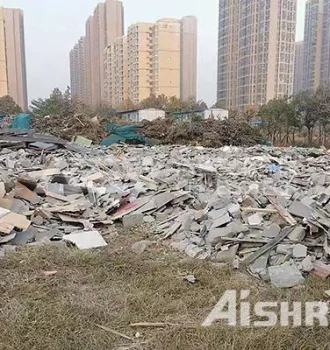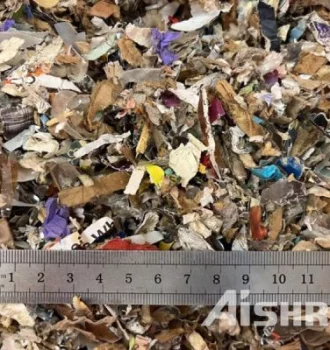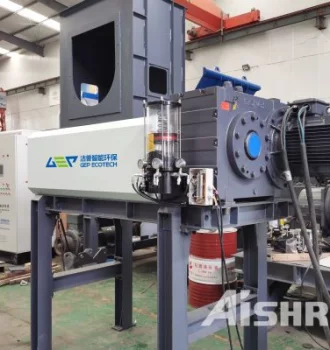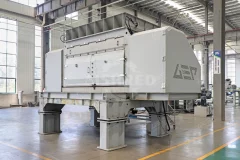
Waste textile materials are highly favored for their high calorific value, uniformity, purity, and low ash content, making them a popular choice for producing RDF alternative fuels. Among the essential equipment, the single-shaft shredder plays a critical role in the process of converting waste textiles into RDF fuel. Advantages 1. High Shredding EfficiencyThe single-shaft shredder features a rotating shaft as its core component, utilizing the shearing and tearing action between high-speed rotating blades and fixed blades to break down materials. This design is particularly suitable for processing fibrous waste textiles, enabling rapid shredding into smaller fragments. The close coordination between the moving and fixed blades ensures thorough shearing and tearing of fibers, minimizing tangling and blockages, thereby significantly improving shredding efficiency. This high-performance shredding capability makes the single-shaft shredder an ideal choice for waste textile processing. 2. Uniform and Controllable
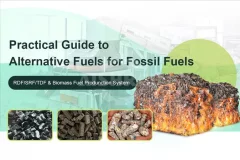
Practical Guide to Alternative Fuels for Fossil Fuels, RDF/SRF/TDF & Biomass Fuel Produnction System
2025-03-26We specialize in the design and manufacturing of efficient, environmentally friendly Solid Recovered Fuel (SRF) and Refuse-Derived Fuel (RDF) processing equipment. Our state-of-the-art production lines transform various waste materials into high-quality alternative fuels, effectively addressing waste management challenges while delivering sustainable energy solutions for businesses.
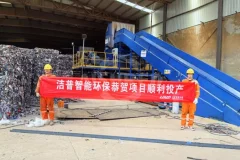
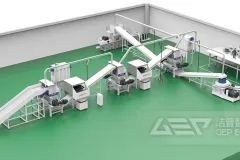
The traditional RDF (Refuse-Derived Fuel) production process mainly relies on heavy-duty single shaft shredders for shredding treatment, sometimes using double shaft shearing or primary shredding as pretreatment equipment to improve material processing efficiency. However, this process presents many challenges: the price of single shaft shredders from some world well-known manufacturers may reach as high as USD850,000, putting significant financial pressure on small and medium-sized enterprises in the initial investment stage; The power consumption for ton processing can reach 50 kW·h, which not only increases operating costs, but may also require additional procurement of high-capacity transformers to meet demand; In addition, wearable parts such as cutters wear out quickly and often require repair or replacement within a few days, thereby increasing maintenance costs. These factors limit the cost control and production efficiency of traditional process, affecting the long-term sustainable development of
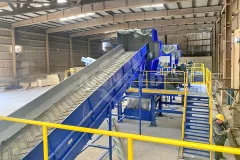
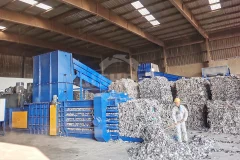
In the economically dynamic Yangtze River Delta region of China, a waste textile alternative fuel production line with an annual capacity of 100,000 tons is set to be commissioned. This innovative production line will provide efficient and environmentally friendly RDF (Refuse-Derived Fuel) to a cement kiln operated by a state-owned enterprise, replacing traditional coal and significantly reducing greenhouse gas emissions. The project not only accelerates the green transformation of the cement industry but also stands as a key development in the circular economy sector.The Yangtze River Delta is a global hub for textile and garment production, generating vast quantities of clothing each year, which inevitably results in substantial textile waste. Effectively managing this waste has long been a challenge. This 100,000-ton per year alternative fuel production line converts waste textiles into high-energy RDF fuel, addressing the local processing capacity shortage while reducing fossil fuel usage. The project
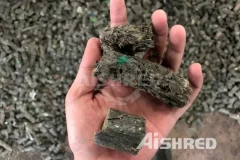
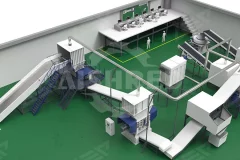
Alternative Fuels RDF&SRF Treatment Systems
2024-02-25Solid alternative fuel RDF/SRF is a solid form of fuel made from industrial solid waste through various processes. By reducing the water content of industrial waste and increasing the calorific value of the product, it replaces traditional energy sources (coal) and reduces pollutant emissions, thus realizing "turning waste into treasure".Energy Structure and ProspectsFrom the perspective of energy structure, alternative fuels (SRF/RDF), as a renewable energy source with broad prospects, are processed from solid wastes, with combustion efficiencies similar to those of fossil fuels, but with low carbon emissions, and are generally utilized in existing thermal power plants, cogeneration plants, and cement kilns to carry out coupled power generation/blending power generation/mixing power generation/co-disposal in cement kilns with RDF/SRF, which saves costs for enterprises and contributes to the environmental protection.The substitution relationship between fossil fuels and alternative fuels (SRF/RDF) is:- 1.4
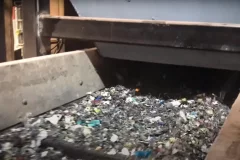
Types of Waste Plastics Suitable for SRFSolid Recovered Fuel (SRF) can be derived from various waste plastics. Plastics suitable for SRF typically include:Polyethylene Terephthalate (PET): Commonly used in water and soft drink bottles.High-Density Polyethylene (HDPE): Used in milk jugs, detergent bottles, and some plastic bags.Low-Density Polyethylene (LDPE): Found in plastic wraps, grocery bags, and various containers.Polyvinyl Chloride (PVC): Used in pipes, window frames, and flooring.Polypropylene (PP): Found in food containers, packaging materials, and bottle caps.Polystyrene (PS): Used in foam cups, packaging, and disposable cutlery.Mixed Plastics: Assorted plastic materials that might not be suitable for recycling individually but can be used in SRF production.
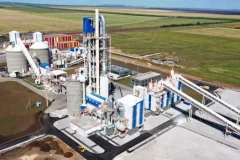
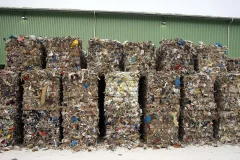
Cement Plant Refuse Derived Fuel System
2024-01-03The cement industry is undergoing a positive and remarkable transformation: replacing fossil fuels with refuse derived fuels (RDF), solid recover fuels (SRF) or biomass. This measure helps to reduce carbon emissions, achieve more environmentally friendly cement production processes, and fulfill the commitment of cement enterprises to sustainable development.GEP ECOTECH is committed to promoting sustainable development in the cement industry, and we offer a variety of innovative alternative fuel solutions for this purpose. Our solutions cover various kinds of materials and feeding requirements, tailoring the best solutions for customers to ensure stable and high-quality fuel supply.Shredding SystemA powerful shredding system is the key to the successful production of high-quality RDF/SRF. GEP ECOTECH's multi-stage shredding system doesn't fear the challenges of complex materials. From pre shredder to shearing shredder, and the eye-catching single shaft shredder, our shredders' durability and trouble free
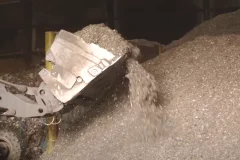
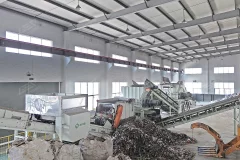
When it comes to discarded shoes, many people think about how to properly dispose of them, and one potential solution is to convert old shoes into solid recovered fuel (SRF). Although this may sound surprising, in theory, this approach is possible. Here are some considerations for converting old shoes into solid recovered fuel .Why can old shoes be used as solid recovered fuel ?Discarded shoes contain a variety of materials such as rubber, leather, synthetic fibers and metal trimmings. The processing and utilization of these materials, especially the combustion potential of rubber and synthetic fibers, makes discarded shoes a potential solid recovered fuel .Advantages of using old shoes as solid recovered fuelHigh calorific valueSmall particle sizelow moisture contentManufacturing process of using old shoes as solid recovered fuelPrimary shredding (shred to 30 mm),Screening to remove fine materials (helps reduce moisture content), trommel screen recovery or air density separation to remove heavy components,
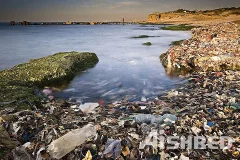
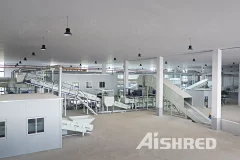
Mixed municipal waste contains a large number of recyclable beverage bottles, metals, cardboard and other renewable resources that can be recycled and reused; the content of perishable waste, mainly food waste, accounts for 40-60%, which can be utilized as a biomass energy source; and the largest proportion is still high-calorific-value combustibles, which can be prepared as "alternative fuels (RDF/SRF)" to reduce the use of coal combustion.AIShred, as a manufacturer of solid waste pre-processing equipment, offers a complete range of proven and reliable systems and equipment for the preparation of alternative fuels (SRF) based on the three main pre-processing objectives of mixed domestic/other waste: "sorting of recyclables", "extraction of organic matter", and "preparation of combustible materials for RDF/SRF".The whole set of domestic garbage alternative fuel (SRF) preparation system adopts the automatic process design of "feeding - bag breaking - screening - recycling - crushing - transportation", which
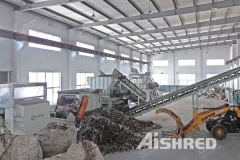
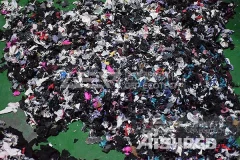
SRF Alternative Fuel Disposal Process
2023-08-21SRF is the abbreviation for Solid Recovered Fuel. SRF is usually a refined RDF (Refuse Derived Fuel). SRF is not waste, but a clean, homogeneous, high-quality, and high calorific value fuel that can be used in power plants or cement plants to replace traditional fossil fuels such as coal. Moreover, SRF is a kind of environmentally friendly fuel, with carbon dioxide emissions only one-fourth that of coal, and NOx emissions significantly reduced.Component analysisSRF is usually composed of papermaking waste, waste wood, biomass fuel, combustible materials in MSW (Municipal Solid Waste), and waste textiles in general industrial solid waste.Process flowFirstly, the material is transported to a primary double shaft shearing shredder, which shreds the material into smaller sizes of around 100-300mm. Then these materials enter the magnetic separator, through which the ferromagnetic metals inside the materials are recycled. The remaining materials are transported to a secondary single shaft fine shredder, which
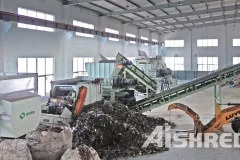
RDF Shredder Machine for Sale, Get Quotation for Your Waste-to-Fuel Solution with one Click
2023-07-22In today's world, the escalating volume of waste has overwhelmed traditional landfill disposal methods, resulting in wasted space and valuable resources. To combat this issue, the conversion of waste into solid fuel has become a popular solution. Two essential products of this process are RDF (Refuse-Derived Fuel) and SRF (Solid Recovered Fuel). These fuels are obtained through advanced shredding and processing techniques that transform waste into valuable energy sources with high calorific value. The waste shredder plays a vital role in this waste-to-fuel transformation process, efficiently breaking down waste materials and creating homogeneous fuel products. RDF and SRF offer sustainable alternatives to conventional fossil fuels, contributing to a more eco-friendly and resource-efficient future.RDF PlantThe RDF (Refuse-Derived Fuel) plant is a specialized facility designed to efficiently convert solid waste into RDF, a valuable solid fuel with high calorific value. The RDF plant's workflow involves several
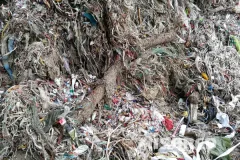
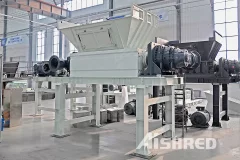
Paper Mill Waste Utilization Direction: Convert to RDF using the AIShred Industrial Waste System
2023-02-26According to statistics, the paper waste residue produced by a recycled paper production plant with an annual output of 1.5 million tons is about 180,000 tons/year or more. When paper mills use recycled materials to make paper, the production process produces a large amount of waste materials, including stranded rope and light slag. For these paper waste residues, they can be reused in applications such as incineration for power generation, metal recycling, plastic regeneration, etc. after treatment through a reasonable process. Can paper mill waste be made into RDF fuel rods?Paper mill waste can be made into RDF fuel rods. Most of the solid wastes produced by paper mills are combustible materials, and only a small amount of materials with recycling value. After processing, paper mill waste can be made into RDF fuel rods, which can be used in large circulating fluidized bed boilers to mix and couple power generation and replace the use of coal-fired fuel in a large amount, saving a large amount of coal-fired
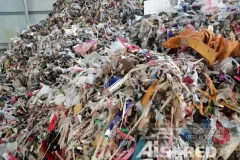
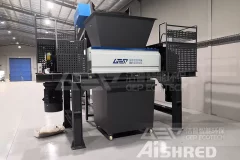
How to Deal with Paper Mill Waste?
2023-02-22Do you know how the paper we use every day is produced? Whether it is office paper, living paper, corrugated paper boxes, etc., paper is really important in our life. Traditional paper is produced from pulp. However, with the deepening of environmental protection concepts and the promotion of environmental protection policies, recycled paper has been slowly replacing traditional pulp paper. The rise of recycled paper has great significance for environmental protection and resource recovery. However, in the process of recycled paper making, a large amount of paper mill waste will be produced. According to statistics, the paper mill waste produced by a recycled paper mill accounts for about 12% of the recycled paper production. For example, a recycled paper mill with an annual output of 1 million tons will produce about 120 thousand tons of paper mill waste every year. If these paper mill residues are not properly treated, they will have a great impact on the environment, thus losing the significance of the
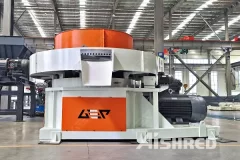
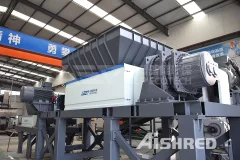
RDF Shredders for Waste-to-Fuel
2023-02-14Derived fuel has the characteristics of high calorific value, stable combustion, easy transportation, easy storage and low secondary pollution, which is widely used in drying engineering, cement manufacturing, heating engineering and power generation engineering. RDF raw materials mainly come from domestic waste, industrial waste, organic waste, etc. It contains waste paper, hard plastic, metal, glass, wood, rubber and other substances. The coarse shredder and fine shredder meet the crushing requirements of RDF, greatly simplifying the RDF treatment process and realizing high economic and ecological value. Equipment Configuration The crushing of this high mixture of materials places high demands on the crushing technology. The stable operation of the shredder requires high performance alloys and high reliability of the whole machine. This type of crushing requires a machine capable of handling hard materials such as metals and plastics. To obtain a high quality RDF, the following steps need to be performed:
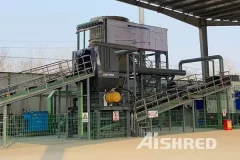
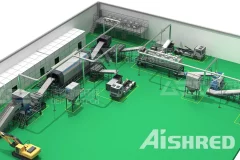
With the development of the economy, the number of waste textiles eliminated by residents has gradually increased, sporadic treatment cannot meet the production requirements, and a sustainable industrial waste system is urgently needed to help us explore together. Today, let's talk about the energy recovery of waste textiles. Because of the addition of comprehensive materials, the thermal value of the waste textiles is very good and the combustion is good. Therefore, it has great potential for incineration power generation and cement kiln. As the energy recovery of waste textiles, we must use industrial waste shredding to deal with the production line. Only through the disposal of this production line can we meet the energy recovery of waste textiles. So what is this industrial waste system? First of all, the core equipment of this system is shredding+sorting, and the connection system is conveying. The purpose of broken is to fully shatter, shear and crushed materials. First, ensure that the material can be
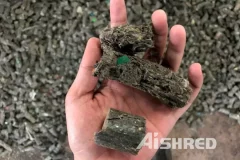
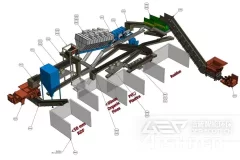
There is a lot of domestic waste produced in cities every day, which is increasing. Therefore, it is an urgent task to seek a way of recycling treatment of municipal solid waste. Converting municipal solid waste into waste derived fuel, namely RDF (Refuse Derived Fuel), is a mature waste treatment method in developed countries. RDF fuel has been widely used in the United States, Europe, Japan and South Korea to generate electricity or heat. How Does Municipal Solid Waste Become RDF?The production process of RDF is to first use sorting equipment to classify urban domestic waste, separate the recyclable parts according to different material properties, and then separate the waste plastics, waste paper scraps, wood chips, PVC and other combustible wastes from the waste through screening steps such as magnetic separation, air separation, non-ferrous metal screening and other steps, and then crush, dry and grind them into granular fuel. RDF is extruded and solidified into granules at high temperature. The RDF
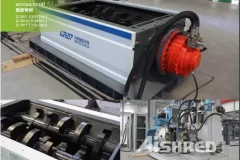
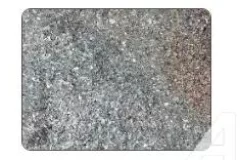
AIShred RDF&SRF Alternative Fuel Technology
2022-07-12Internationally, Refuse Derived Fuel (hereinafter referred to as "RDF") is regarded as a new way of waste harmless, recycling and reduction. It has been widely used in cement, power generation and other industries. It is green, environmentally friendly, high quality and low price Alternative fuels (SRF/RDF) are the new trend of the future. The preparation of waste-derived fuel RDF is not limited by site and scale. It is suitable for small and medium-sized waste treatment plants to be scattered and manufactured, and then collected for power generation, which is conducive to improving the scale and efficiency of waste-to-energy power generation. Converting waste to waste-derived fuel (RDF) serves two purposes: it can reduce the amount of waste sent to landfills, thereby solving problems in the waste field, and it can supply large coal-fired power plants, waste incineration plants, cement plants Provides a large number of alternative fuel RDF. AIShred RDF&SRF Alternative Fuel Achievement PathAIShred has
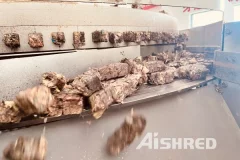
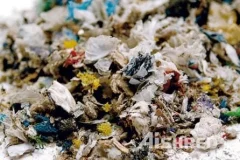
How Much Does an RDF Plant Cost?
2022-05-16Alternative fuel RDF(refuse derived fuel) or solid secondary fuel is a fuel obtained from waste. RDF contains high-calorie waste components such as plastic, paper, cardboard, textiles, rubber, leather, wood, etc.RDF can be used as main or supplementary fuel in furnaces of cement plants, thermal power plants, metallurgical furnaces. The calculations performed showed the expediency of replacing gas or coal with RDF in the production of cement.The production of cement requires significant energy costs due to the need to maintain the temperature in cement kilns above 2000°C. For each ton of cement produced, typically 60-130 kg of fuel oil, or its equivalent (natural gas, coal), and about 105 kWh of electricity are required. On average, energy, fuel and electricity costs account for up to 40 percent of cement manufacturing costs. Therefore, it is advisable to use alternative fuels obtained from waste in production processes in order to reduce the use of traditional fuels and raw materials by replacing them with
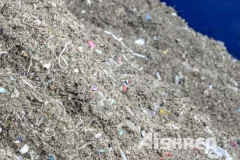
Plant for Production of RDF and SRF
2022-05-09Refuse Derived Fuel(RDF) and Solid recovered fuel(SRF) is the final product of a complex production process which is modernly defined as the "chain of differentiation, recovery and recycling of municipal solid waste". RDF/SRF is an excellent fuel with a great energy power and a very limited cost, in addition, turning waste into RDF/SRF also reduces landfill space and many other costs. RDF/SRF Production Process The RDF/SRF preparation process consists of several processes: a primary shredding, screening, separation, removal of ferrous and non-ferrous metals and a final shredding. Different material compositions and specific requirements may increase or decrease certain processes. At the waste treatment site, Minhang Sanitation Company processes overproduction, bulky waste fractions, large packaging and unsorted municipal solid waste by transforming them into waste-derived fuels (RDF) of various qualities. The company specialized in disposal supplies waste incineration plants, but mainly cement plants, for
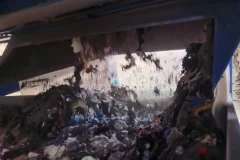
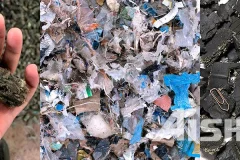
Fuel Processing for RDF, TDF and SRF
2022-05-05Since the beginning of the 21st century, more and more waste has been generated. In order to cope with the threat to the environment caused by the increase in waste, people have begun to use waste as fuel that can be burned in boilers for power generation or heating. We divide the fuel from waste into RDF, TDF, SRF according to different components and processing method of the waste. RDF(Refuse-derived fuel) is a fuel produced by sorting and shredding combustible materials contained in municipal solid waste (MSW) and industrial waste. Compared to fossil fuels, RDF is more affordable, abundant, and environmentally friendly. SRF(Solid Recovered Fuel) is a fuel produced by drying, filtering, and shredding solid waste, It is usually produced to meet the standards in Europe. The EN 15359 document gives the specifications for classifying SRF. Unlike RDF, SRF is a more refined material that is slightly more efficient than RDF, though it takes a more advanced process to make the fuel. TDF(Tire-derived fuel) is a
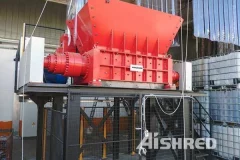
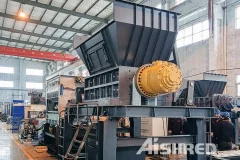
Alternative Fuels Pre-processing Shredder
2022-04-08The GD Series double shaft shredder is designed to be versatile, making it suitable for pre-processing a wide range of solid alternative fuels. It can handle materials from municipal solid waste, industrial and commercial waste, to agricultural and forestry residues, and even automotive and truck tires. These materials are frequently used to produce alternative fuels for incinerators, chain grate furnaces, CFB boilers, and rotary kilns.The winning feature of this shredder is that it is a low speed machine.It consists of two shafts with opposite rotation, independent of each other. The cut takes place thanks to the action of the rotating blades on the fixed blades which are installed on a crosspiece placed between the two shafts. The rotating blades and fixed blades are interchangeable and resharpenable.The distance between them is also adjustable to always have a clean cut. The machine can be equipped with a screening grid that allows to obtain a product of defined dimensions, suitable for use as a
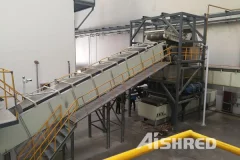

Industrial Shredder for Cement Industry
2022-04-06Cement production is an extremely energy-intensive process that emits approx. 8% of the world’s CO2. There are huge economic and environmental benefits to be made by replacing fossil fuels with alternative fuels made from waste. Cement producers utilizing alternative fuels such as refuse-derived fuel (RDF) and solid recovered fuel (SRF) can gain a substantial competitive edge. In many cases, however, input waste streams contain diverse materials not suitable for co-processing in the cement kiln. A well-designed alternative fuel production process ensures the best quality. To maximize energy production with the lowest possible emissions, a homogeneous grain size, high calorific value, controlled material composition, removal of fines, low chloride and a stable humidity content are a must. Opening waste bags and reducing the size of waste by pre-shredding ensures that unwanted items can be screened and separated from the process. Later in the process, when you have achieved an optimal material content for the
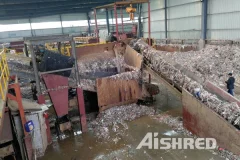
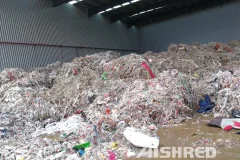
The global demand for various paper products is increasing day by day, which is causing paper mills (and recycled paper mills) everywhere to operate at full capacity, while also generating a large amount of solid waste, including pulp waste, twisted rope, light residue, steel wires, etc. Landfills cause pollution, and now paper mills have new options, It can be made into bulk fuels or RDF pellets after shredding, separation and dring. AIShred Industrial Waste Shredding PlantAIShred industrial waste shredding plant is specially designed to handle difficult-to-handle industrial materials. With high torque, it can easily shred materials to the required size(

